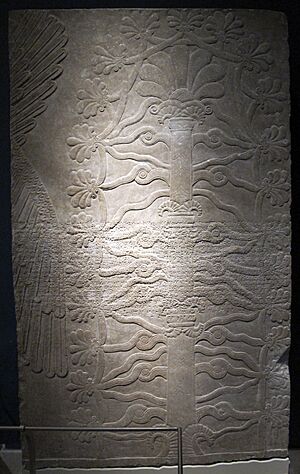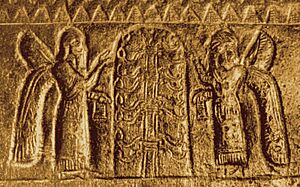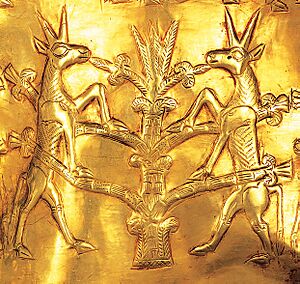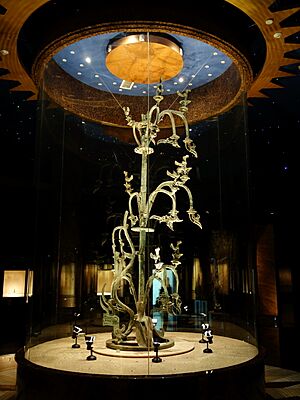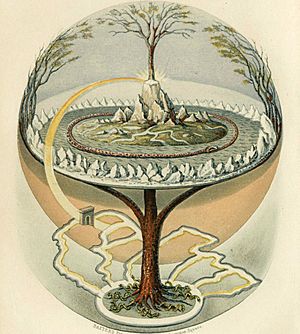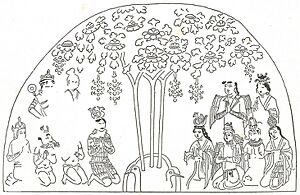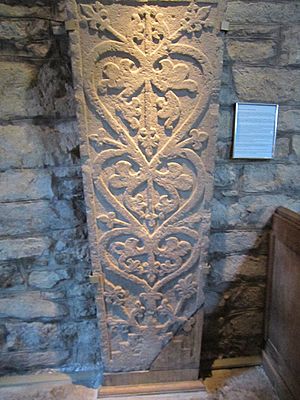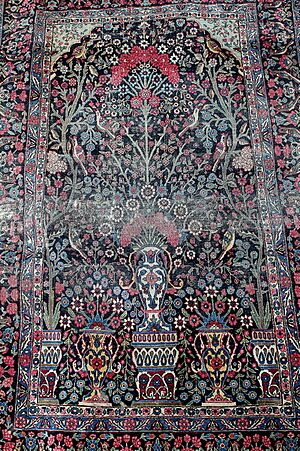Tree of Life facts for kids
The term Tree of life can mean a few different things. It often refers to the idea that all living things on Earth are connected, like branches on a giant tree. This is a big idea in biology.
But the "Tree of life" also appears in many stories, religions, and myths from around the world. In these cases, it's a symbol of connection, growth, and sometimes even immortality.
Contents
The Tree of Life in Biology
In biology, the Tree of life shows how all life on Earth is related. It's like a family tree for every living thing, from tiny bacteria to giant whales. This idea is based on evolution.
Scientists believe that all life started from a common ancestor a very long time ago. Over millions of years, different species developed and changed. This process is called evolution. The Tree of life helps us see how different groups of animals, plants, fungi, and other living things are connected. For example, humans and monkeys share a common ancestor, just like you and your cousins share grandparents.
You can learn more about this scientific idea at Tree of life (biology).
Symbolic Trees of Life
Many cultures and religions have their own ideas about a special "Tree of life." These trees are often symbols of wisdom, connection between heaven and Earth, or even eternal life.
Ancient Symbols
Ancient civilizations often used the Tree of life in their art and stories.
- The Assyrians, an ancient people from Mesopotamia, had a sacred tree that represented their gods and the universe. It was often shown with a king or a winged spirit.
- The Urartians, who lived in what is now Turkey, also had their own version of the Tree of life. It often appeared on helmets and other objects.
- In ancient Iran, a tree of life was sometimes shown on special drinking vessels called rhytons.
- In China, especially in the ancient Sanxingdui culture, large bronze trees with birds and ornaments have been found. These might represent a Tree of life connecting different worlds.
Trees in Mythology and Religion
Many myths and religions feature a Tree of life.
- In Norse mythology, there is a giant ash tree called Yggdrasil. It connects the nine worlds of the cosmos, including the world of humans and the world of the gods.
- The Manichaeans, followers of an ancient religion, believed in a Tree of life that grew in the "Realm of Light."
- In some old churches in Sweden, you can find sculptures of the Tree of life, showing its importance in early Christian art.
- The Tree of life is also a popular design in carpets and other textiles, often symbolizing growth and prosperity.
Kabbalah
In Kabbalah, a mystical tradition in Judaism, the Tree of life is a very important symbol. It's a diagram made of ten circles, called Sefirot, connected by lines.
This tree represents how God created the world and how divine energy flows into it. Each circle stands for a different aspect of God or a different quality, like wisdom, understanding, or kindness. Studying the Tree of life in Kabbalah helps people understand the universe and their place in it.
See also
 In Spanish: Árbol de la vida para niños
In Spanish: Árbol de la vida para niños


